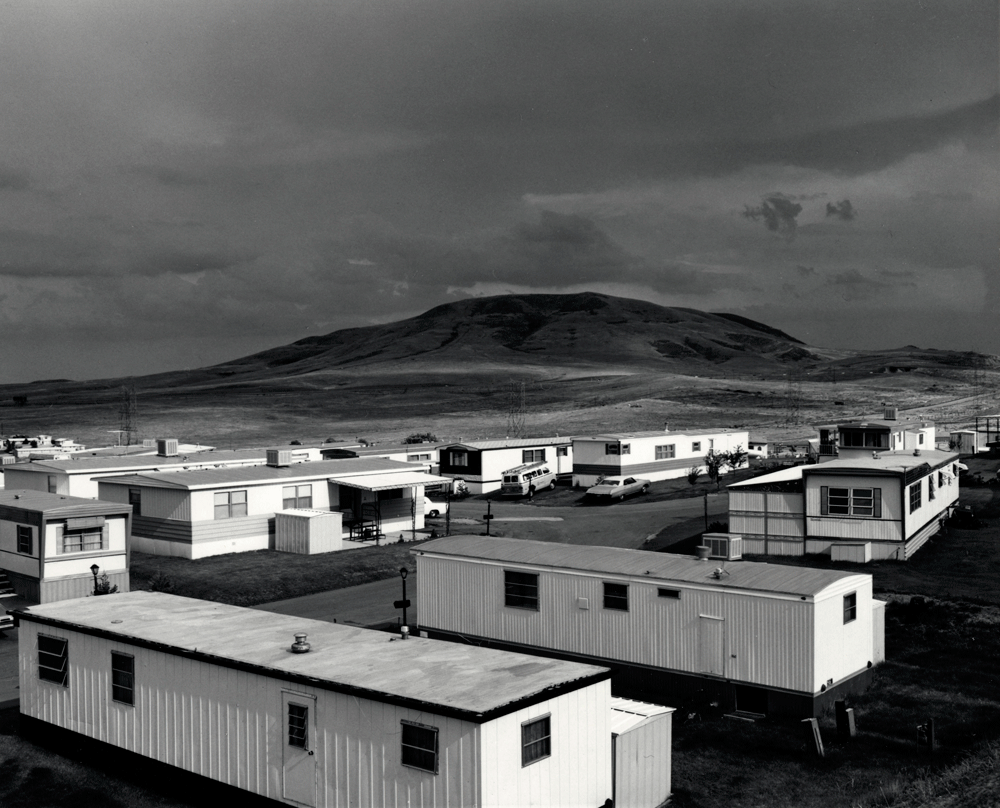
The photograph splits a Colorado environement in two. On the top Adam presents an ominous mountain with clouds similar to the classic nature photograph, while on the bottom he captures the harsh edges of mobile homes blasted with sunlight. The contrast between the angular houses and the smooth edge of the mountains creates an obvious conflict between humans and nature. It is a site of interaction between humans and the inhuman. The photograph works to recognise the American West as a landscape scattered with human development rather than an untouched natural environment.

Frank Gohlke deconstructs the viewers concept of landscape by depicting an empty parking lot in the foreground with only a glimpse of nature in the mountainous background. All together, the photo feels hollow with centred framing and a lack of human presence. Through the picture, Gohlke provides a negative view of the modern interaction between humans and nature.
Side by side these photos reveal certain aspects of the new topographic aesthetic. They move from a celebration of nature to a critique of humanity’s desire for expansion. At the same time, the images create a sense of despair in their subjects through straight on angles and centre framing.


